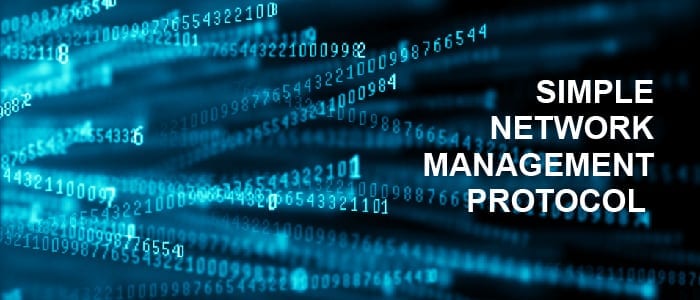Gain Insightful Data in Your Critical Facilities with the Power of SNMP
Environmental complexity and the critical availability of essential infrastructure is at an all-time demand.
Given the large volume of various equipment types and data in todays modern workspace combined with insufficient organization and monitoring control, it’s time to rethink the way you manage your IT environment.
By implementing a holistic combination of hardware and software solutions, you can gain valuable insight while maximizing operational costs to optimize your return on your investment.
And it all starts with 4 significant letters, SNMP – Single Network Management Protocol.
What is Simple Network Management Protocol?
Simple Network Management Protocol (SNMP) is an Ethernet based communication protocol that allows for critical equipment to be monitored and managed over a traditional TCP/IP network.
It provides a framework to communicate between SNMP managers and agents used for monitoring and managing devices within the network.
It was originally developed in 1988 and has evolved to become a Vertiv and Liebert standard that you likely will be exposed to, if you haven’t already. This brief overview has been developed as an introduction to the basics of SNMP and is not intended to provide a comprehensive explanation.
How SNMP Works
SNMP’s architecture is constructed on a traditional client-server model. The server, or software running on the server, is often called the SNMP Manager.
It collects and processes the information from individual pieces of equipment that have been setup to be managed via the server. The Clients, or Agents, are those individual pieces of equipment that have been properly configured to communicate with the server.
While the SNMP architecture is simple, the actual information that is transferred and the methodology is complicated.
Fortunately, there’s several equipment packages that can make retrieving and processing of SNMP data much more efficient.
Though SNMP is designed to be agnostic, it’s our experience that the manufacturer of the equipment typically provides the best tools for monitoring their specific devices. All Vertiv monitoring software solutions have turnkey capabilities to manage Vertiv products but can also be used to incorporate third-party devices that support SNMP.
Vertiv offers several solutions that have been designed for easy deployment and your local sales office will always offer ongoing support. That support is key because your monitoring solution is never complete and seems to always be evolving with new additions and modifications.
Configuration Features of SNMP
The basic information needed to properly configure the SNMP protocol into a new agent is the device name/type, device IP address, target or destination IP address, and a community string (sometimes called a community name).
Ideally, the specific device you are trying to bring into the software solution has native support or a built-in driver, program file or function block, which decodes the information accurately and provides relevant units of measurement.
Management Information Bases
However, if the device is not supported, you will need to either build a driver or request one be created by the software vendor using data tree structure known as Management Information Bases, or MIBs.
This MIB file groups together particular types of devices or device components. Each MIB has a unique identifying number, as well as an identifying string.
Object ID
Like a tree, MIB consists of multiple branches, called objects, which represent individual devices or device components on the network. Every object has a unique identification number associated with it, known as an Object ID or OID. Simply put, a group of OIDs form a MIB.
Through the OID, a Manager can utilize the agent to find information about the device on the network.
It is often thought that SNMP is used for communicating alarm status while it can also deliver valuable parametric data from your equipment.
SNMP Trap Commands
To poll information from the various devices on the network, an SNMP Trap (Using GET and RESPONSE commands) is used to gather information and communicate it directly to the Manager. Devices can usually be configured to send specific types of traps such as link status changes, current load percentage, return air humidity, temperature setpoints and alarm thresholds.
The SNMP Trap goes out the moment the event happens while parametric data is polled at designated intervals. If your interval for requesting parametric data is every three minutes, you wouldn’t want to wait that long to know that your UPS is on battery.
For this reason, SNMP uses two different network ports (161 and 162) to communicate these two different types of data. We often find one or both of these ports blocked by a local firewall if you have trouble during initial SNMP setup.
Another powerful component to SNMP is its ability to not only retrieve information but to also change values at the device level. Authorization to make these modifications is possible by verifying that both the manager and the agent can confirm a common community string or password. The agent needs to be setup to provide both read and write SNMP access to facilitate this type of request. Changing the current temperature deadband in your computer room air-conditioner (CRAC) would be an example of using the SET command in SNMP.
Interested in Learning More about Our Data Management Solutions?
Need a better way to track and visualize the infrastructure in a single system for accurate and complete information?
As your Local Vertiv Office, our team is readily available to help evaluate your critical infrastructure and find a comprehensive solution to help you to make informed decisions every step of the way. Get in touch with us to learn more.

